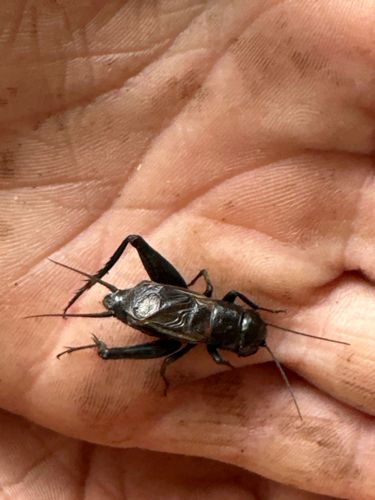Field Cricket
Scientific Name: Gryllus pennsylvanicus (or similar Gryllus species)
Order & Family: Orthoptera, Gryllidae
Size: 15-25 mm (0.6-1.0 inches)

Natural Habitat
Found in fields, meadows, lawns, gardens, and often around human dwellings, particularly attracted to light at night. They prefer areas with dense vegetation or ground cover.
Diet & Feeding
Omnivorous, feeding on a wide variety of plant material including seeds, seedlings, flowers, and grasses, as well as dead or living insects (e.g., aphids, small caterpillars, other dead crickets). They can also consume fungi and decaying organic matter.
Behavior Patterns
Primarily nocturnal, known for the males' characteristic chirping sound produced by stridulation (rubbing their forewings together) to attract mates. They are solitary until mating season. They are strong jumpers and can sometimes fly, especially males seeking mates. If disturbed, they will attempt to flee by jumping.
Risks & Benefits
Potential risks include being a nuisance when they enter homes due to their chirping, and in large numbers, they can cause minor damage to garden plants. Benefits include serving as a food source for many animals (birds, small mammals, reptiles, amphibians) and can help with decomposition of organic matter. They are also common bait for fishing.
Identified on: 9/17/2025